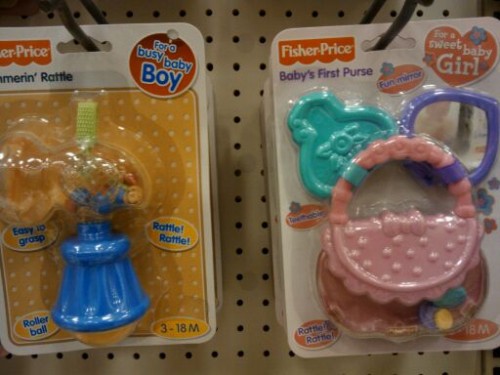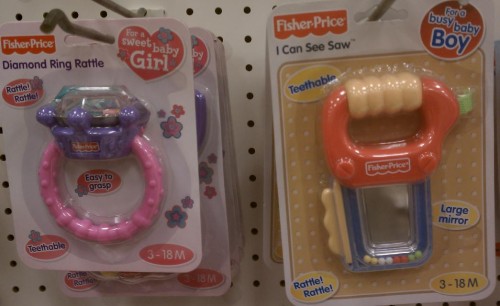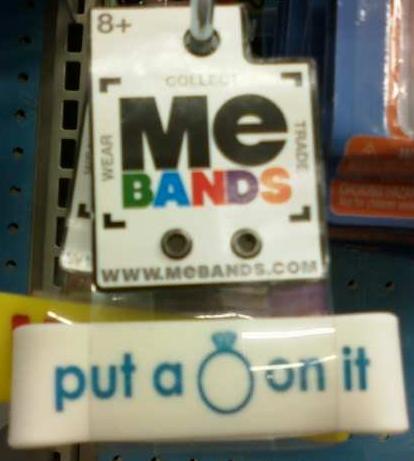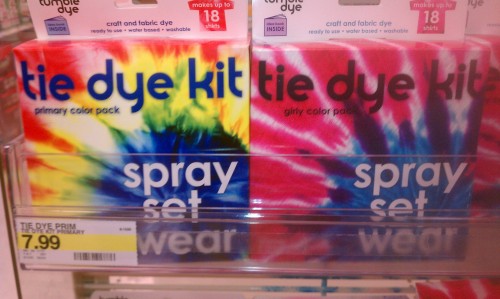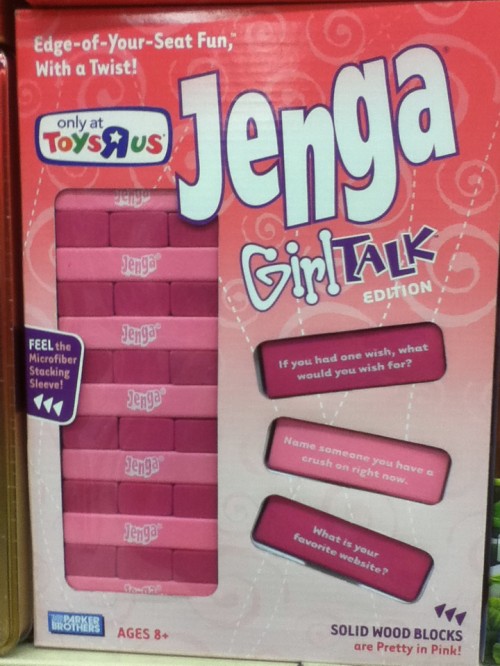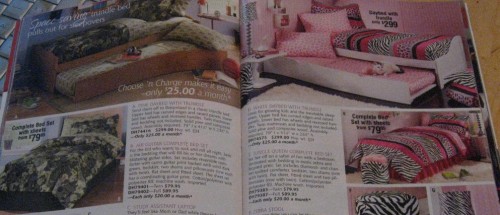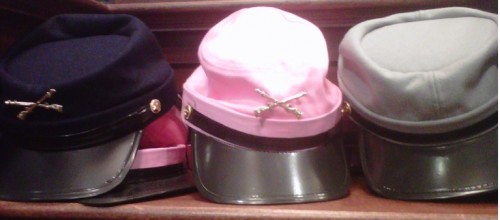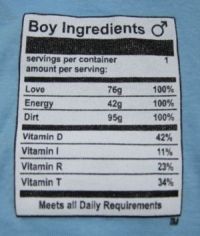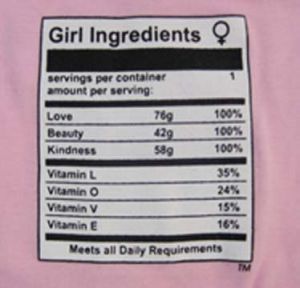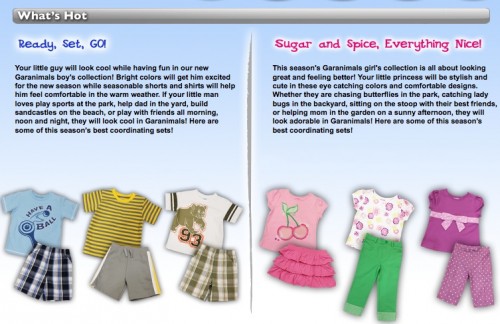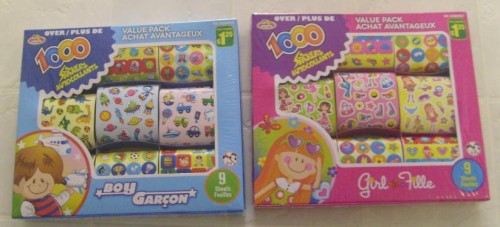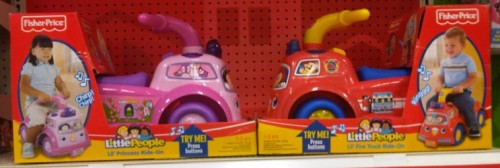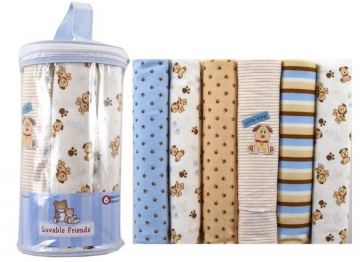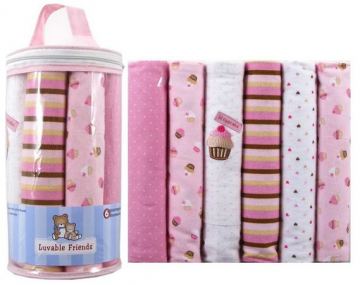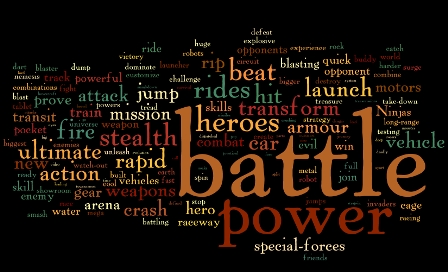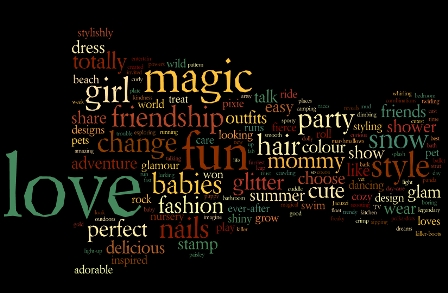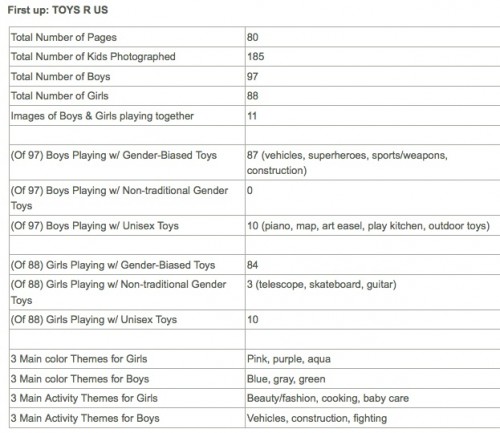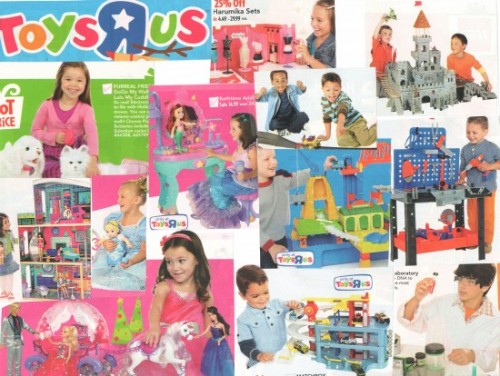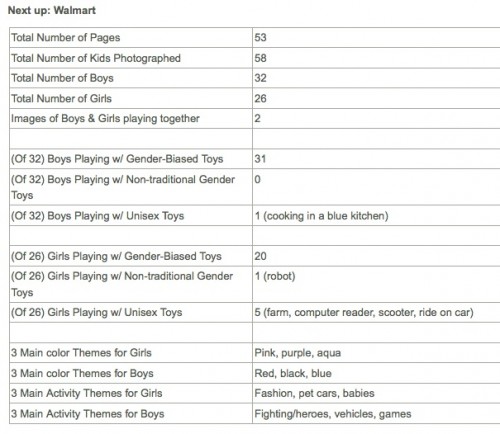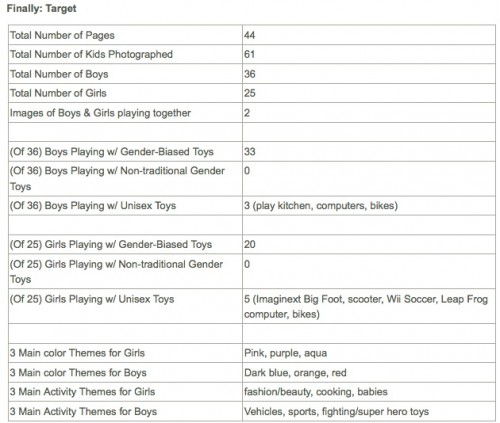Time for another collection of gendered kids’ stuff!
First, the blog-o-sphere is all over this one already and apparently JC Penney has already pulled the t-shirt, reading “I’m to pretty to do homework so my brother has to do it for me.” Really? I like how Jezebel framed the issue with a big “NO”:
Thanks for Caroline Heldman, Tom Megginson, Mana T., Carmel L., Heidi S., Melissa B., Alli, and Ed A.-N. (on our Facebook page) for sending in that doozy.
Next, Jessica M. and Amanda G. each sent in a photo of gendered baby rattles, both in terms of the design (girls get a purse and diamond ring, boys get a hammer and saw) but also in the description — girls are “sweet,” boys are “busy”:
Don’t worry; once your daughter outgrows the diamond ring rattle, there are other products available to remind her that the most important thing in the world is to get a diamond ring, specifically in the form of an engagement ring. Liz saw this for sale in the toy section at Wal-Mart, which was a relief, because as she said, girls these days just “don’t have enough pressure to get hitched at age 8+”:
Hishaam S. noticed that Target had four tie-dye kits — camo, neon, primary, and girly:
Laura M. sent us an image Jenga Girl Talk Edition, originally posted by Elena Barbarich. The game (which comes in two versions, pastel blue and purple and “exclusive pink”) includes blocks with girl-specific questions to stimulate conversation, such as who you have a crush on and the truly brilliant “What is your favorite website?”
There are many versions of Jenga — Donkey Kong, the Nightmare before Christmas, Transformers, and so on — but there doesn’t appear to be a version specifically labeled for boys. [NOTE: Reader JF says there’s a board game called Girl Talk, so this is being cross-branded with it.]
Esther M.-E. noticed a recent Seventh Avenue catalog contains an example of the “masculinized things are for everyone, but feminized things are only for girls” cultural pattern. The catalog had two facing pages of bed sets, the one on the left called Air Guitar (featuring guitars on the sheets, in a blue room with a basketball on the floor) and the one on the right called Jungle Queen (in a pink room with a cat):
The description of the Air Guitar set, however, describes it as appropriation for boys or girls, while the Jungle Queen set doesn’t include the same language (and its very name specifically genders it):
Seventh Avenue, of course, is marketing in this manner — actively including girls in the product that might otherwise be defined as masculine while not doing the same for boys with the feminized product — because our cultural norms surrounding gender value the masculine over the feminine. Girls who like “boy” things are often seen as cool, sassy, even smart. Boys who like “girly” stuff, though, are not cool. Even if a boy asked for a pink animal-print bedroom set, his parents are less likely to support the choice than if a daughter chose a masculine-gendered item. Seventh Avenue is simply writing copy based on this larger cultural pattern, and in so doing, reinforcing it.
And now, something that just goes in the “wtf?” category, which I include here for no reason other than the pure surreality of its existence. J.O. was looking at the girls’ toys section at All Modern Baby, and among the Fashion and Beauty Fun there were several sets of rubber bands in various shapes, including…the Kama Sutra package, with four positions:
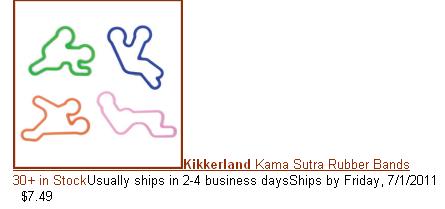
You won’t be surprised to learn they have been removed from the site, and I found a few other kid-related websites that had them listed as no longer available as well, though if you’re dying for a set, several non-child-oriented sites carry them. The perils of modern inventory management: you order a bunch of perfectly ordinary sets of silly bands, and among the space ship and animal shapes, no one catches that you’ve also posted a sex-themed version.


